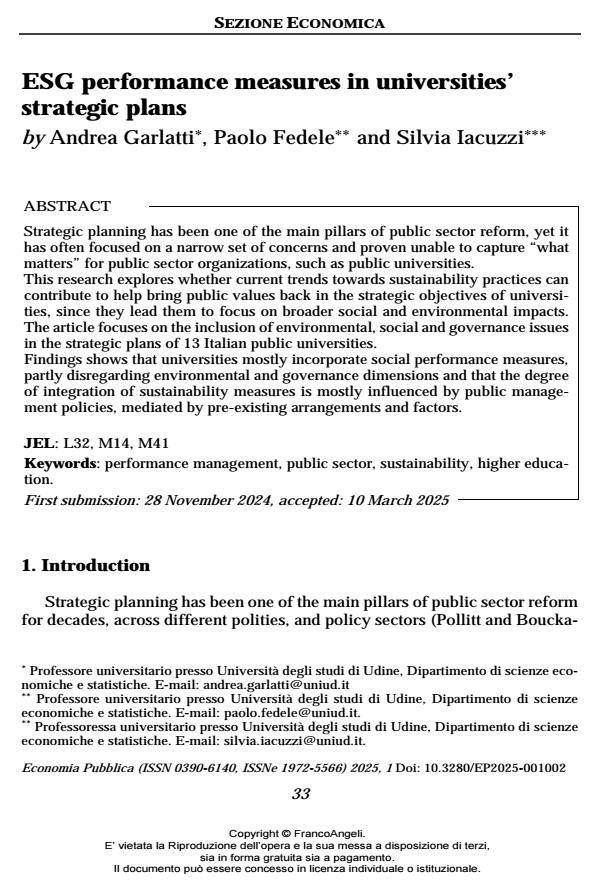ESG performance measures in universities’ strategic plans
Titolo Rivista ECONOMIA PUBBLICA
Autori/Curatori Andrea Garlatti, Paolo Fedele, Silvia Iacuzzi
Anno di pubblicazione 2025 Fascicolo 2025/1
Lingua Inglese Numero pagine 38 P. 33-70 Dimensione file 191 KB
DOI 10.3280/EP2025-001002
Il DOI è il codice a barre della proprietà intellettuale: per saperne di più
clicca qui
Qui sotto puoi vedere in anteprima la prima pagina di questo articolo.
Se questo articolo ti interessa, lo puoi acquistare (e scaricare in formato pdf) seguendo le facili indicazioni per acquistare il download credit. Acquista Download Credits per scaricare questo Articolo in formato PDF

FrancoAngeli è membro della Publishers International Linking Association, Inc (PILA)associazione indipendente e non profit per facilitare (attraverso i servizi tecnologici implementati da CrossRef.org) l’accesso degli studiosi ai contenuti digitali nelle pubblicazioni professionali e scientifiche
Strategic planning has been one of the main pillars of public sector reform, yet it has often focused on a narrow set of concerns and proven unable to capture “what matters” for public sector organizations, such as public universities. This research explores whether current trends towards sustainability practices can contribute to help bring public values back in the strategic objectives of universities, since they lead them to focus on broader social and environmental impacts. The article focuses on the inclusion of environmental, social and governance issues in the strategic plans of 13 Italian public universities. Findings shows that universities mostly incorporate social performance measures, partly disregarding environmental and governance dimensions and that the degree of integration of sustainability measures is mostly influenced by public management policies, mediated by pre-existing arrangements and factors.
Parole chiave:performance management, public sector, sustainability, higher education.
Jel codes:L32, M14, M41
Andrea Garlatti, Paolo Fedele, Silvia Iacuzzi, ESG performance measures in universities’ strategic plans in "ECONOMIA PUBBLICA " 1/2025, pp 33-70, DOI: 10.3280/EP2025-001002